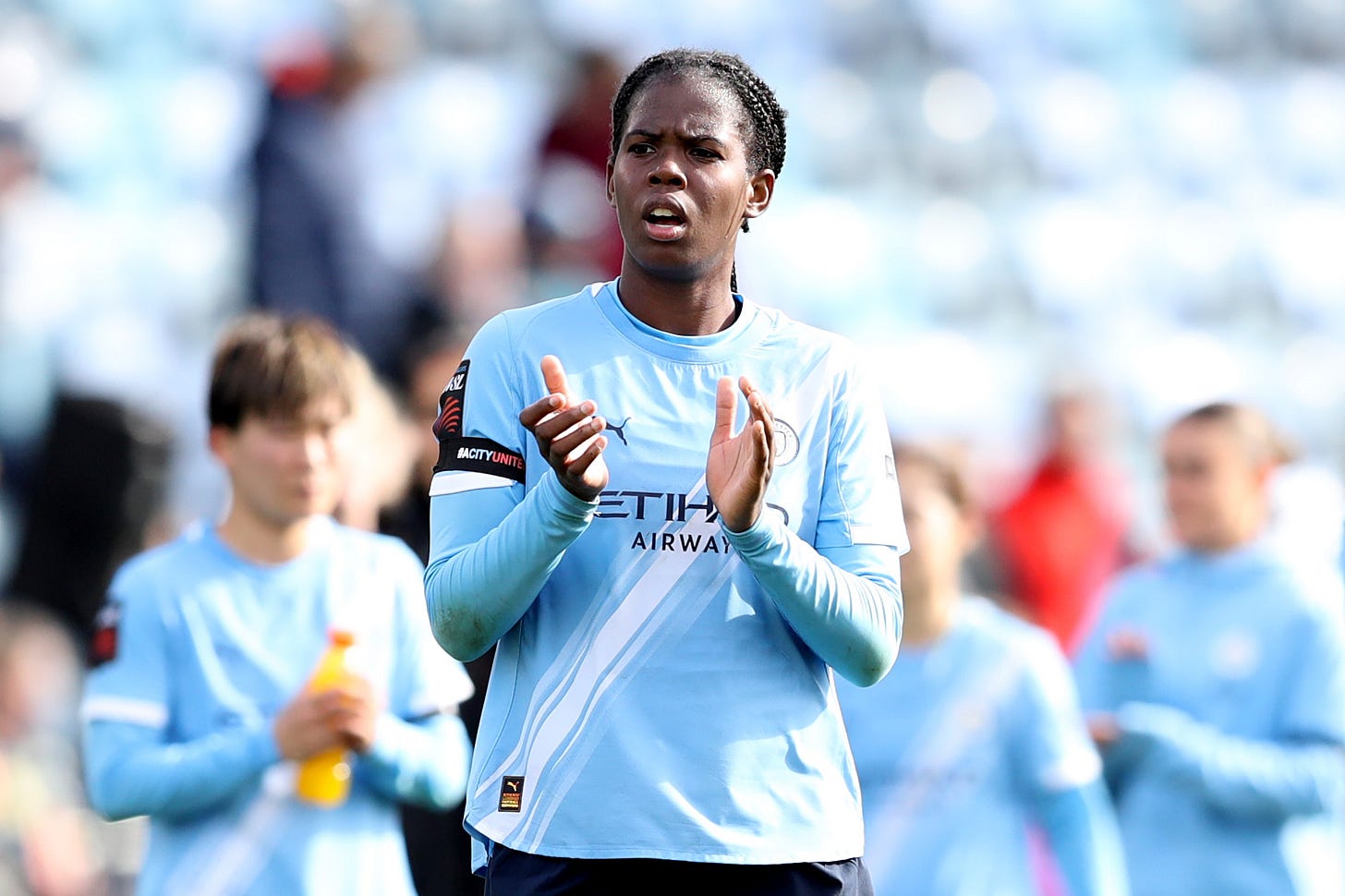A closer look at Manchester City’s evolving identity under Andrée Jeglertz
Jeglertz’s City show their new edge against Arsenal – high intensity, sharper identity, same defensive risks
After their opening clash with Chelsea offered only early hints of Andrée Jeglertz’s ideas, Manchester City met Arsenal in a game that already carried the weight of a six-pointer, and perhaps an early twist in the title race. It was a test not only of their ambitions but of how their evolving identity held up against elite opposition.
The context
Five league games and one cup tie in, Manchester City Women already reflect the blueprint Andrée Jeglertz has been sketching since his arrival. A side built on intensity, aggressive pressing, constant movement and a tempo that rarely drops. Compared with last season’s more possession-heavy approach, City look more direct, more dynamic and more willing to take risks. The change in structure has been key. Moving away from the 4-3-3, Jeglertz has adopted a 4-2-3-1 that offers more fluidity and variation. The double pivot provides balance and prevents opponents from shutting down City by targeting a single playmaker. This system allows the midfield to rotate and drive the game forward at greater speed.
Personnel have also been important. Grace Clinton has impressed centrally and on the wing at a time when several attacking options are unavailable, while Kerstin Casparij is proving to be one of City’s most consistent performers. After a short shift at left-back, Alex Greenwood has returned to her natural role at centre-back, restoring leadership to the defensive line. Up front, Khadija ‘Bunny’ Shaw started on the back of a brace against London City Lionesses, a boost after a start to the season that had been relatively quiet by her usual scoring standards.
Keep reading with a 7-day free trial
Subscribe to The Cutback to keep reading this post and get 7 days of free access to the full post archives.




